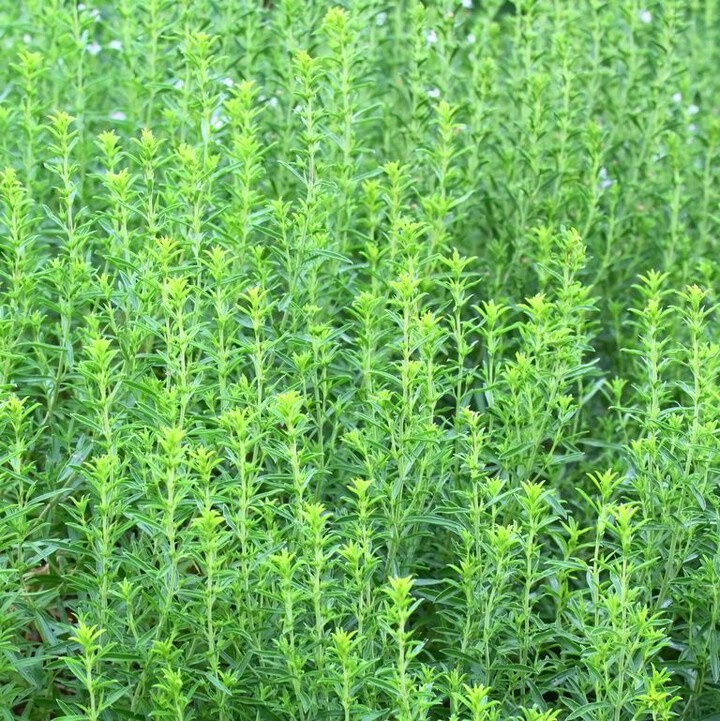
What’s not to love about herbs? They’re super easy to grow, and perennial types come back every spring, many lasting through the first frost. Create a simple potager, or kitchen garden, and harvest your herbs for cooking, sprucing up lemonade, cocktails and tea or simply enjoy their cottage charm (and sweet smells!). Herbs are also great looking greenery in cutting garden bouquets of other spring and summer flowers like zinnias and daisies. Many types of herbs have gorgeous blooms for weeks, attracting beneficial pollinators such as butterflies, bees, and hummingbirds. In mild regions, you can harvest them most of the year. But even in cold climates, herbs may surprise you by withstanding light freezes. You can start them from seed, but the easiest way to establish them in your garden is to buy them in cell packs from your local garden store or online. Most herbs are full-sun perennials requiring at least six hours of direct sunlight and steady watering, especially once the summer sun shows itself. Toward the end of the season, gather big bouquets of herbs to hang and dry to keep your herb options open into fall. Here, see some of our favorite perennial herbs to plant in your garden.
1.Creeping Thyme
Thyme is a fast grower with teeny leaves and loads of purple or pink flowers. The best news: It thrives on poor soil, and pollinators love it! It's also a hardy ground cover that's most flavorful when used fresh in chowders, potatoes, and pasta dishes.
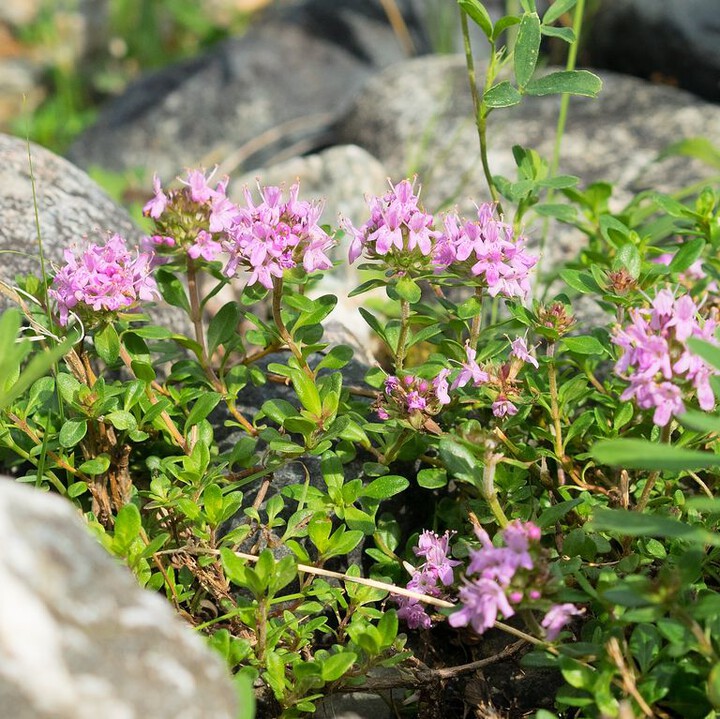
2.Lovage
This old-fashioned herb isn’t seen that often nowadays, but it’s generally unfussy and can grow to several feet tall. Use fresh leaves for a light celery flavor in casseroles, soups, potato dishes, and poultry dressing.
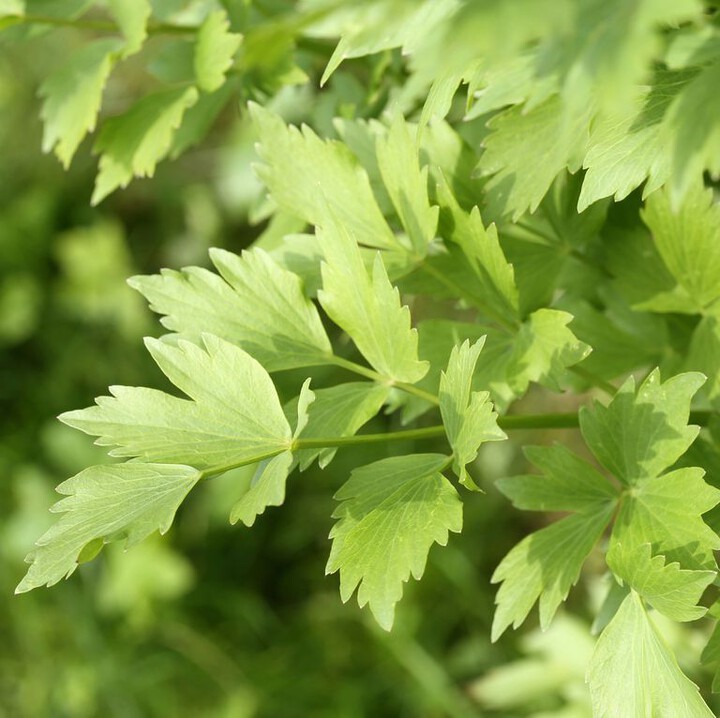
3.Oregano
Honestly, you almost can’t kill oregano. It’s hardy, spreads fast, and has little purple-ish flowers that last for weeks to attract pollinators. Use it in tomato sauce, soups, and pizza.

4.Parsley
Parsley is biennial, so it'll be two seasons before they flower. Buy plants; you’ll lose patience waiting for seeds to sprout. It takes three to five weeks to germinate! Some cooks think Italian flat-leaf parsley has more flavor. Use it in salads, soups, sauces, and potato dishes.

5.Lemon Verbena
This herb has glossy leaves and small white flowers that bloom from mid- to late summer. It survives only mild winters because it’s considered a tropical plant. The strong lemon scent is tasty in iced tea, or use it for potpourri.
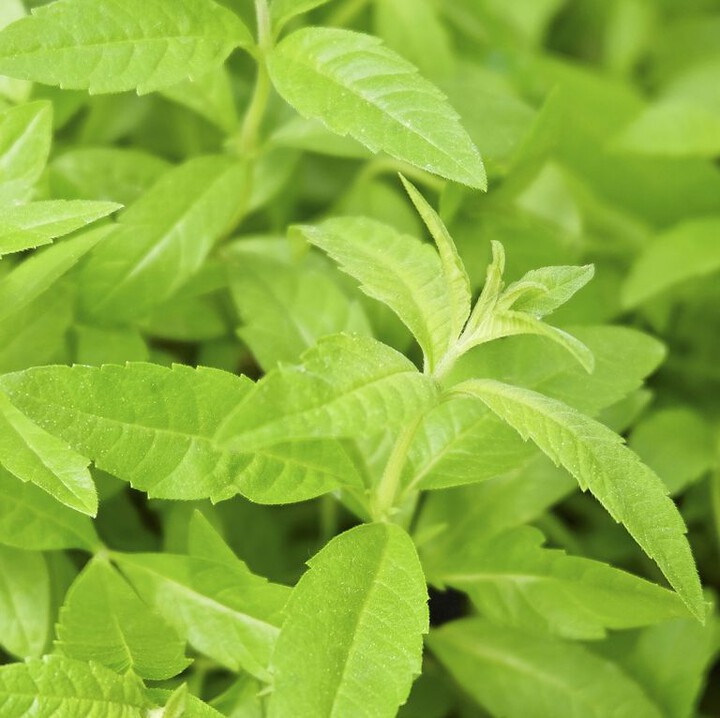
6.Sweet Marjoram
Marjoram has rounded leaves and teeny flowers you almost don’t notice. It prefers sandy soil, but it has zero tolerance for a frost. Plant only in warm climates, or treat as an annual in cold regions of the country. It’s used in poultry dishes, soups, and potatoes.

7.Lemon Balm
This herb has rounded, almost heart-shaped leaves and small white flowers that aren’t that impressive. But the plant does have a very pleasant scent. Use leaves for a mild citrusy flavor in fruit salads or herb butters.
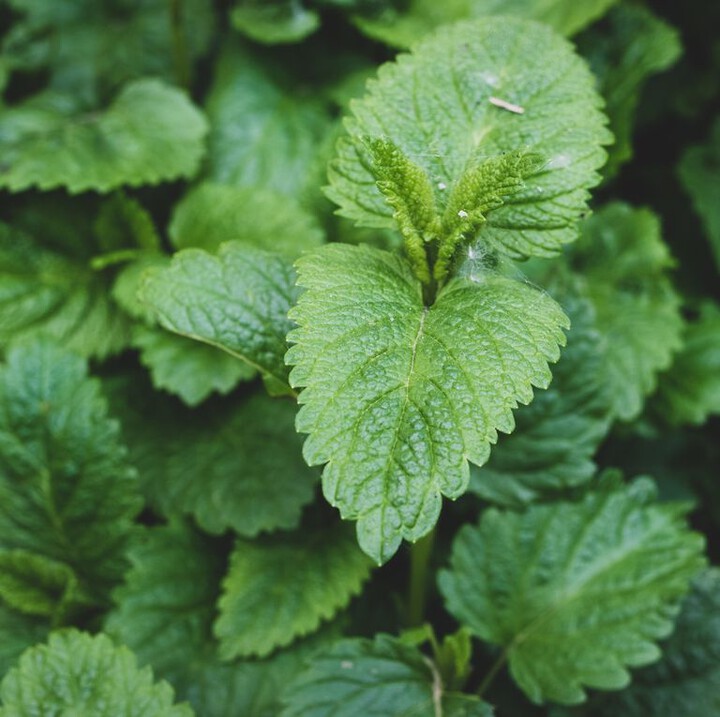
8.Fennel
Delicate, wispy leaves adorn this graceful plant. Some kinds grow up to four feet tall, so make sure it’s in the back of your border. Pollinators especially love the lacey yellow flowers. In most climates, it's an annual, but it drops plenty of seeds so plants come back. Use leaves anytime or dry seeds to use in pasta dishes or sausage for a mild licorice flavor.

9.Sage
Slightly soft and fuzzy, sage can be pale green, tricolor, purple, or variegated. It’s hardy, surviving even the most severe winters. Use as an aromatic to stuff poultry or to season pork dishes. You can also lightly fry whole leaves to top dishes such as pumpkin ravioli.
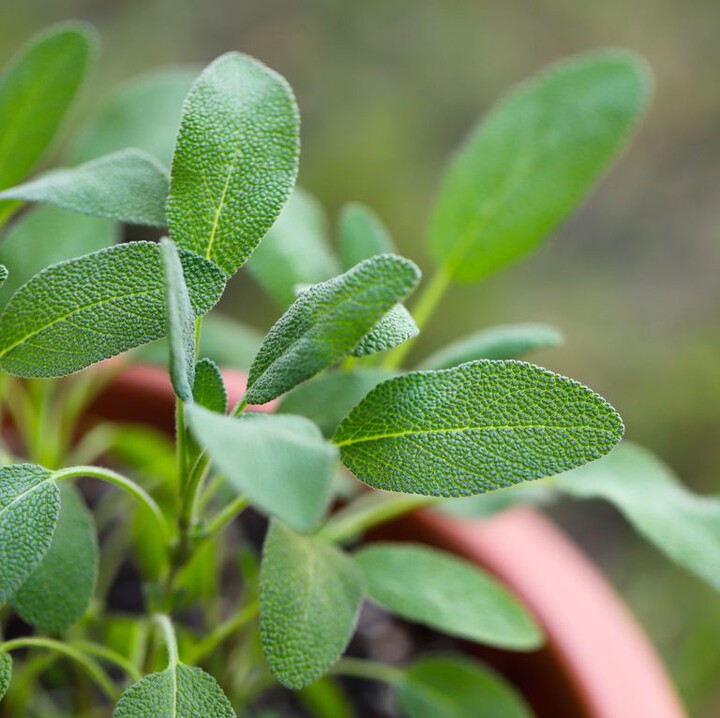
10.Mint
Mint has many different personalities: Spearmint tastes fresh and clean. Chocolate mint tastes sweet. Pineapple mint, well, you get the idea. If you don’t want it to take over the garden (and it will!), plant in a pot sunk into the ground to contain its spread. Add a sprig to lemonade, or chop and toss with home fries. Bonus: Mint is one of those plants that naturally repels mosquitoes.

11.Lavender
This exquisitely scented plant with purple-blue flowers doesn’t like wet feet, so make sure soil is well-drained. Its delicate flavor shines in salads, herb butters, scones, and shortbread. Delish! Alternatively, you can dry for sachets and tuck into your dresser drawers.
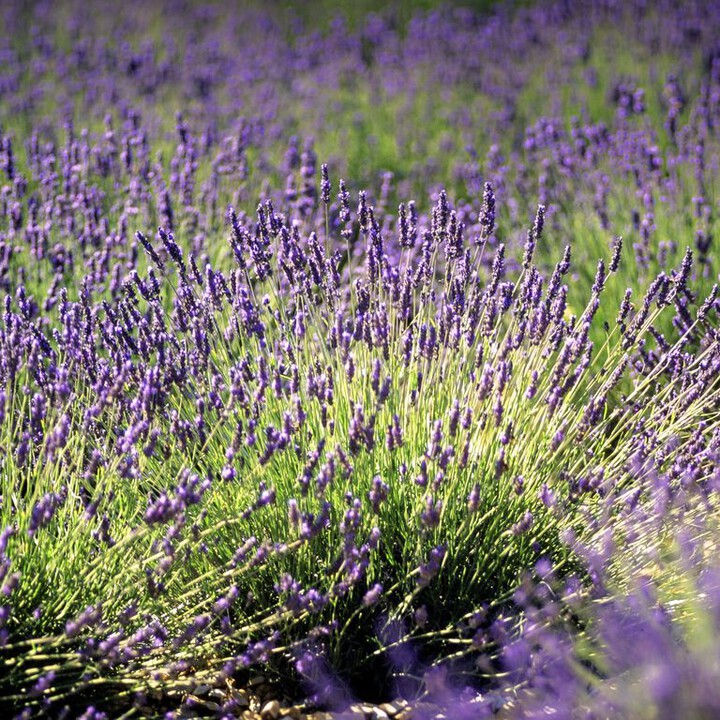
12.Roman Chamomile
These charming daisy-like flowers grow on a bushy plant. Flowers can be used fresh or dried in salads, steeped as a tea, or dried for potpourri. Make sure to read the plant label, as some other types of chamomile are annual, not perennial.
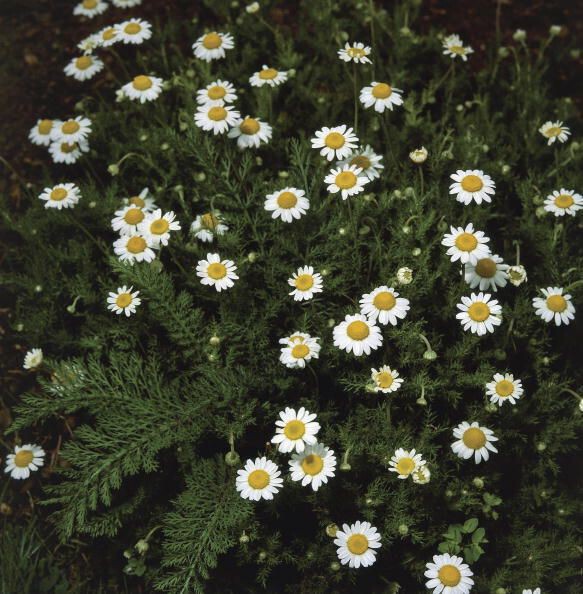
13.Salad Burnet
This herb is one of the lesser known, but it has attractive tooth-edged leaves and pink flowers. Add leaves to salads for a mild cucumber-y flavor.
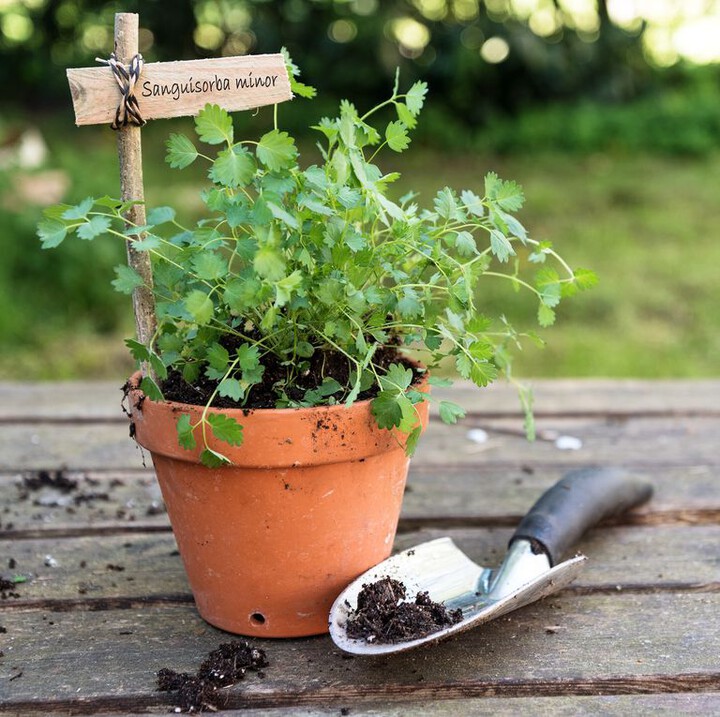
14.Sorrel
Sorrel is another less commonly grown herb with long leaves and dark red veins. It likes lots of moisture. The leaves have a lemony tang, and it’s used in salads and soups or as a spinach substitute.

15.Chives
Long, slender leaves and pretty pink or purple globe-like flowers grow in clumps and adapt well to many different kinds of soils. The flowers drop seeds, so you’ll also have baby chive plants in successive years. Both the leaves and flowers are edible with a mild onion flavor. Snip off with scissors (pulling on the plants will yank out the roots) and use in soups, salads, or potato dishes.
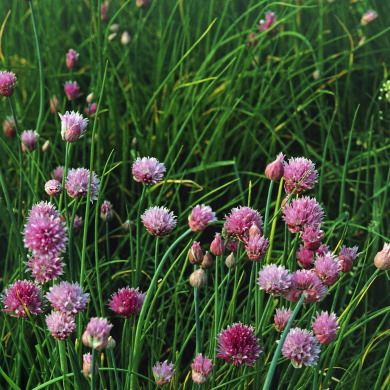
16.Cilantro/Coriander
Cilantro (the leafy part) and coriander (the seeds found in the dried flower heads) are the same plant. Technically, it’s an annual but let the seed heads drop, and baby cilantro plants will appear in cooler weather. The leaves, flowers, and seeds are edible and delicious in salsa, salads, and Mexican recipes. Side note: Some people aren’t big fans because they have a genetic predisposition to perceive a soapy aftertaste when eating cilantro.

17.Viola
You may think of these charming flowers as strictly ornamental, but lightly scented violas are actually edible! They re-seed on their own, so you’ll find them popping up everywhere next spring. Plant in part-shade so they’ll survive the hot summer sun. With their colorful faces, they’re adorable on cupcakes, salads, or frozen in ice cubes.

18.Garlic Chives
Thin, grassy leaves and white clusters of fragrant flowers on clumping plants make these a pretty addition throughout your garden. Use them in place of garlic for a similar but milder taste. Both the leaves and unopened flower buds are edible.
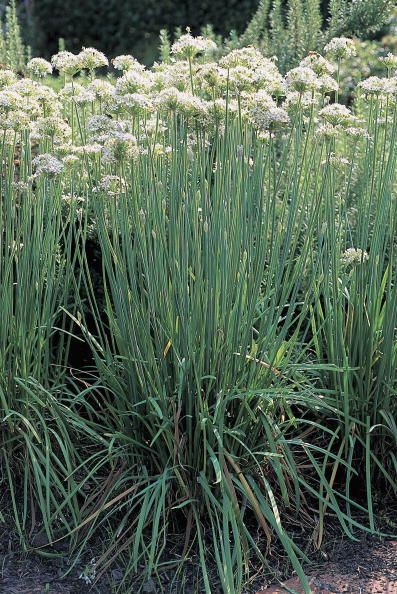
19.Rosemary
Piney-scented rosemary is a fairly sturdy plant. It’s hardy in mild winters but can survive for years in cold climates if planted in a pot and brought indoors in winter. The tiny purple flowers are quite pretty, and dwarf or trailing varieties make a great addition to the garden. Chop up and top sauces, pasta dishes, and roasted meats.
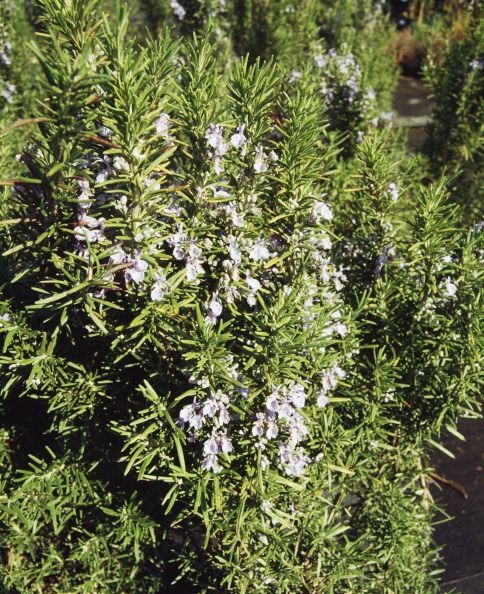
20.Winter Savory
This semi-shrubby plant has small purple or blue flowers and attractive foliage. Don’t confuse with summer savory, which is an annual that won’t survive winter. Add to stews and lamb dishes.
